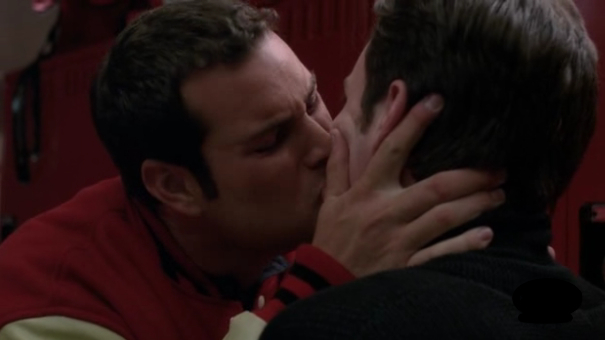In the article "Popular Culture and Queer Representation", Diane Raymond examines three patterns of gay characters on TV: the increased appearance of GLBT characters, the "gay pretender", and the "straight-mistaken-for-gay" character. In describing the "gay pretender" Raymond says there is "never any suggestion whatsoever of any temptation or questioning on the part of the 'straight' character" (Raymond, 108). However in a recent episode of Whitney the character, Neal, comes to a realization that he might be gay. In past episodes Neal has exhibited some stereotypically gay mannerisms but because he was in a stable heterosexual relationship and because his behavior was swept aside by comedy, there was no question to the viewer that he was not straight. This example challenges Raymond's notion because this character actually ended up being gay which leads me to believe that perhaps television has already begun to diversify the ways in which gay characters are characterized or portrayed. Ron Becker studies gay visibility in American culture and a popular theme that arisen in recent television shows is gay characters "coming out". On Glee, viewers have seen not only Kurt coming out of the closet but the macho character of David Karofsky too. As I mentioned before, Neal, on the show Whitney, came out to his friends and on the show Gossip Girl the young teen, Eric, came out to the elite New York society. With more and more shows portraying the struggles gay people face with coming out and fully embracing their sexuality, the visibility of gay life is becoming more clear in American culture. Though Becker and Raymond's articles were written before these episodes occurred, the popularity of having gay characters on television has now become somewhat of a norm and the realistic struggles they face is the newest trend in gay-programming. Though much of the deeper looks into gay life are seen on sitcoms or comedies, the mere fact that they are being discussed is a big leap in terms of gay visibility and discourse on television.

No comments:
Post a Comment